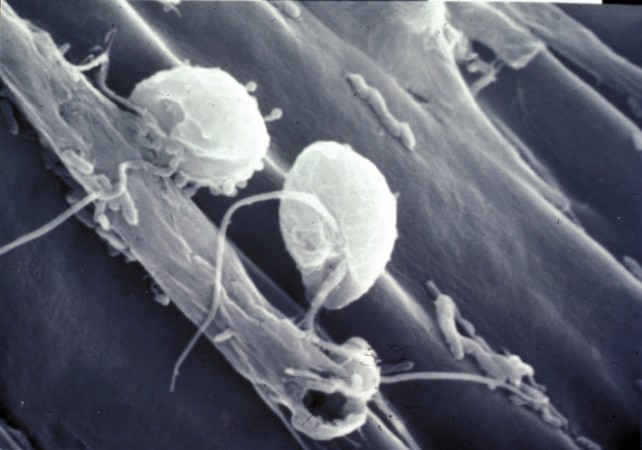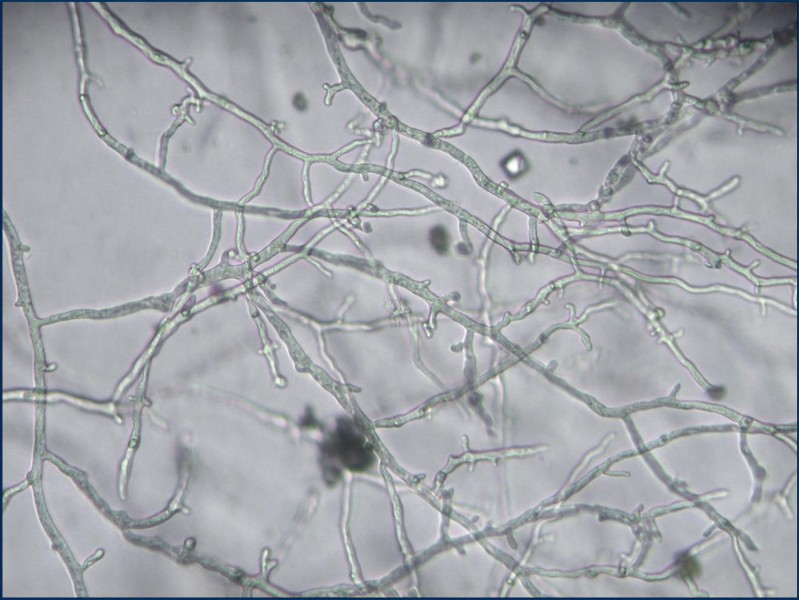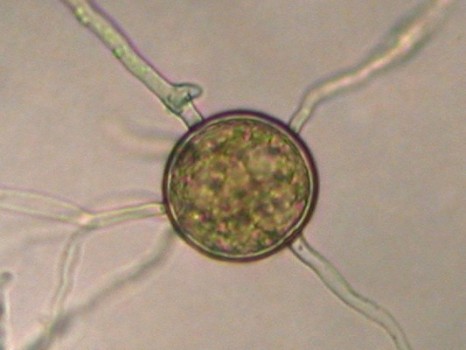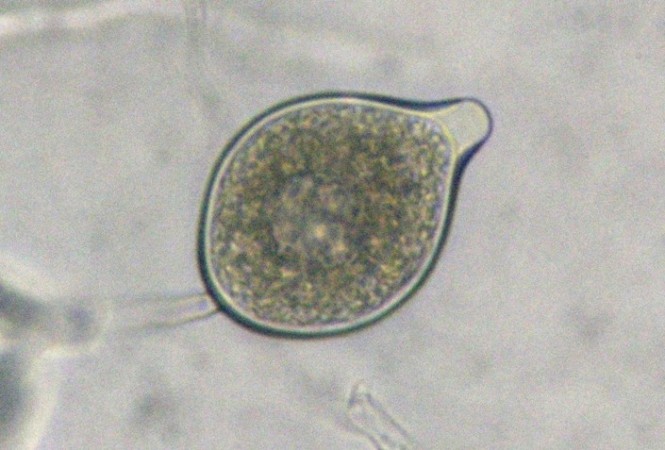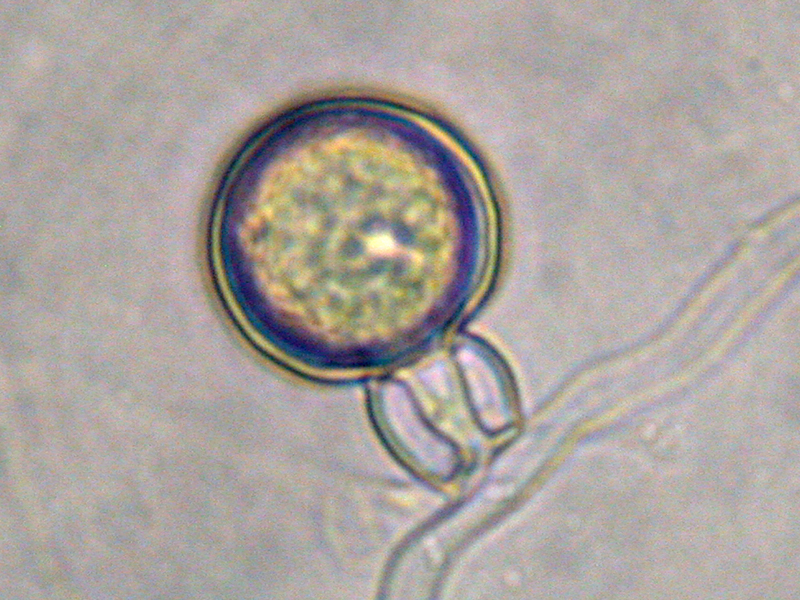Phytophthora nicotianae
Phytophthora nicotianae is the pathogen that causes black shank of tobacco. Synonyms include Phytophthora parasitica var. nicotianae and Phytophthora nicotianae var. nicotianae, but their use is declining.
Classification
Phytophthora nicotianae is a fungus-like organism in the Kingdom Straminipila (sometimes written as Stramenopila), phylum Oomycota, class Oomycetes. Organisms in this class are also known as oomycetes or water molds, and differ from true fungi in many aspects. All stages of P. nicotianae are diploid, whereas most true fungi are haploid. Cell walls are composed primarily of cellulose, not chitin as in true fungi. Hyphae of oomycetes generally lack internal septations.
The organism can grow vegetatively at temperatures between 5°C and 37°C, with optimal growth occurring between 26°C and 32°C. Extended exposure to temperatures above 40°C is lethal to the organism.
Hyphae
Asexual reproduction
Chlamydospores
Zoospores
Sporangia
Sporangia (singular, sporangium) can be ovoid, pear-shaped, or spherical, and have very prominent tips called papillae. Sizes of sporangia vary (18-70 x 14-39 µm) with isolate and the growth medium. Sporangia may sometimes directly produce hyphae, but more often form zoospores. The number of zoospores produced by a single sporangium is typically five to 30.
Sexual reproduction
P. nicotianae is heterothallic, requiring two mating types (A1 and A2) for the production of oospores.
Oospores are thick-walled, between 13 and 35 µm in diameter. Since many fields contain only one mating type and the oospores rarely germinate in culture, they are not thought to serve as a primary survival propagule or initiate infections that lead to epidemic development.
